The Number of Patients Suffering from osteochondrosis Increases Every Year, and the Disease is irredressibly Young - A Couple of Decades Aug this problem concreted mostly the Elderly, But now Often Makes Itself Felt Even for Those Who of Not Even have 30.Common forms is osteochondrosis of the lumbar spine, Which Daily has the maximum load that launches degenerative processes in the vertebrae and intervertebral discs.In addition to the constant pain that interferes with normal life, osteochondrosis without timely medical care is full of serious complications, which means that it is very important to recognize its first signs in time and begin the fight against it.
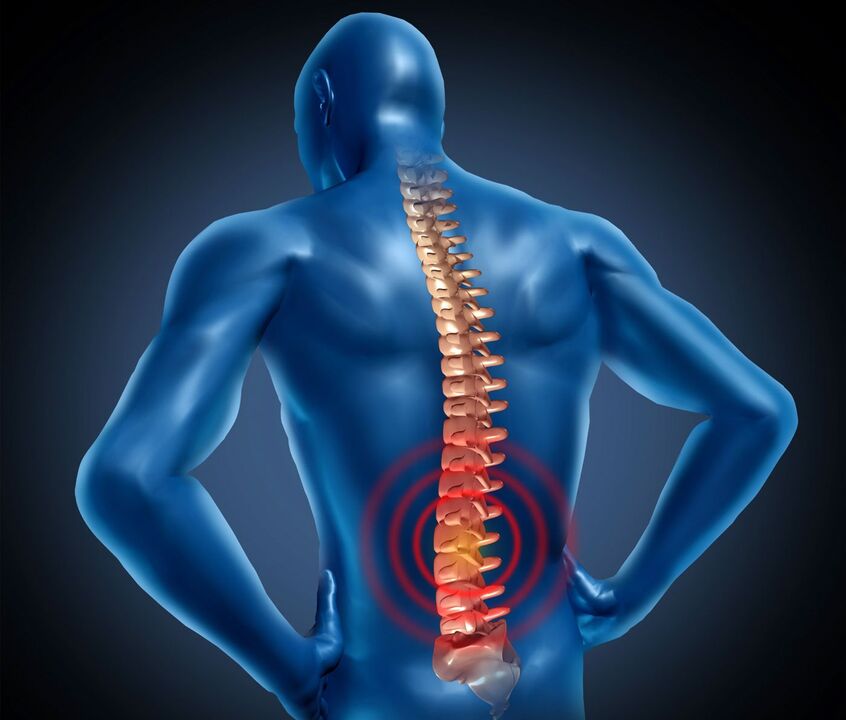
Where osteochondrosis comes from
The question is far from simple, because there are many factors capable of provoking this disease.It may be the physiological characteristics of the body and an unhealthy lifestyle, diet or even a genetically released program.In general, among the main reasons for the development of lumbar region osteochondrosis, it can be distinguished:
- Incorrect distribution of load in the spine (incorrect posture, low quality mattress or office chair, etc.);
- sedentary lifestyle;
- Frequent tensions;
- harmful habits;
- a scarce diet, leading to a deficiency of the necessary vitamins and tracking elements;
- hypothermia;
- Pathology of the structure of the musculoskeletal system, for example, curvature of the spine, boring feet, etc.;
- overweight;
- Violation of metabolism;
- spine lesions;
- Transferred infectious diseases;
- Chronic inflammatory processes, mainly associated with joint diseases;
- Genetic predisposition.
The risk group also includes people whose professional activities are associated with significant loads, for example, athletes and those who need to be in the same pose for a long time: teachers, office staff, drivers, waiters, hairdressers etc.
In addition, osteochondrosis usually becomes the result of other diseases, for example liver disorders or gastrointestinal tract (in approximately 30% of patients), the heart as well as the inflammation of ovaries in women and prostatitis in men.In this case, existing pathologies cause muscle and vascular cramps, causing oxygen hunger and dystrophic changes.Consequently, the tissues that form the intervertebral vertebrae and discs, which suffer from lack of nutrition, are gradually destroyed - osteochondrosis in the lower back develops.
Symptoms of the disease
In which signs can be recognized in a person that osteochondrosis of the lumbar spine and is it realistic to do so until the disease gained impulse?Unfortunately, in the early stages, this disease in many cases continues almost asymptomatic, and a slight discomfort in the back that comes from time to time is more often discarded for normal fatigue.This is its main danger - although osteochondrosis can still be read without consequences, it is difficult to detect and when the problem becomes obvious, it is much more difficult to reduce pathological processes.
The most important sign of this pathology is an intense lower back pain, usually spreading to the whole back, buttocks and legs.In the early stages, it is predominantly painful or pulled and occurs only after sudden physical effort or movements.Over time, periods of relative calmity, when the patient does not feel pain and discomfort, become shorter and gradually unpleasant sensations in the lumbar region become their permanent companions.In addition, there are exacerbations when pain becomes intense and clear, and even the most insignificant load can cause an attack, until coughing or sneezing.
There are additional signs of lumbar osteochondrosis:
- stiffness of movements;
- decreased sensitivity and tingling in the legs;
- violation of perspiration;
- muscle weakness;
- Dry and peeling of the skin.
In the last stages, patients may have difficulty controlling urination and defecation due to spinal cord pinches, and male patients have erectile dysfunction.
Lumbar osteochondrosis
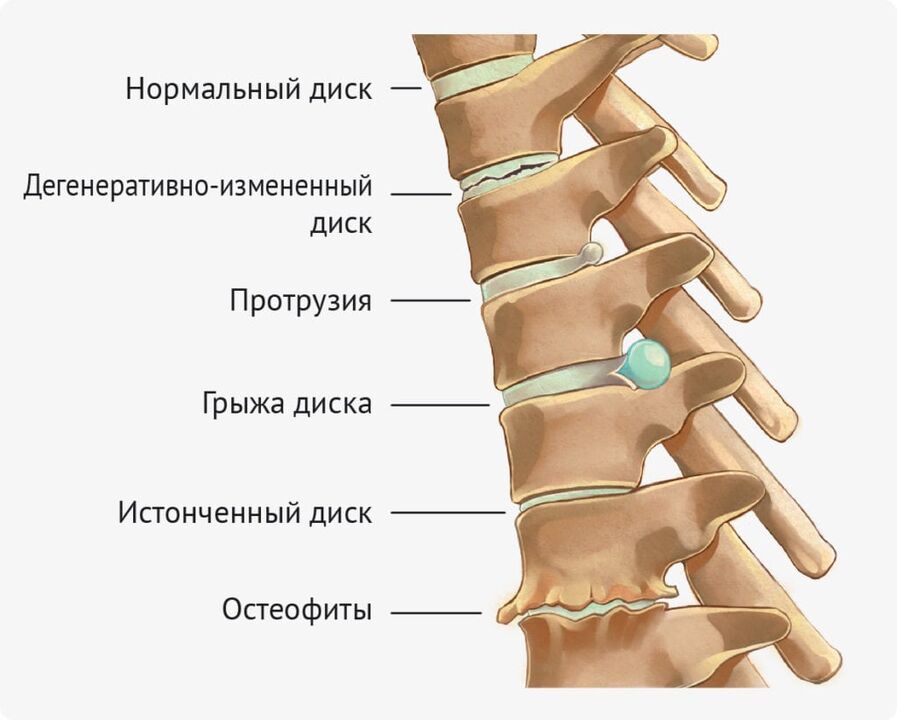
In total, 4 main stages of disease development are distinguished.For 1, the deformation of intervertebral discs is weakly expressed - these are small cracks within the fibrous ring, which cause unpleasant sensations.1st degree osteochondrosis is characterized by paroxysmal pain, which occurs only with clear movements and elevation weights.We are talking about lumbago, that is, bastards in the lower back in response to an attempt to change the uncomfortable position of the body.In addition, at the 1 stage of the disease, patients usually suffer from muscle cramps and swelling.
The 2nd degree lumbar osteochondrosis begins with lumbalgia - pain and discomfort increase and appear regularly and, to improve well - being, is no longer enough to lie down a little and relax.The process of destruction of the fibrous ring continues, and the vertebrae themselves acquire harmful mobility - the distance between them decreases and nerve endings are compressed.As a result, the patient has intense pain as well as an alternative sensation of heat and cold, increased perspiration and skin numbness.
Internship 3 of osteochondrosis is the period of intervertebral hernias formation.The fibrous ring breaks and the contents of the nucleus, pushing the vessels and nerve roots, falls.At the same time, the patient is tormented by acute pains that pursue it almost without a break.Periodically, in the affected area, sensitivity decreases or disappears completely and, in other cases, may raise painfully and accompanied by a tingling and burning sensation.At this stage of osteochondrosis, even a non -expert may notice the deformation of the spine - patients develop the spine of the spine of the spine according to the type of lordosis, kyphosis or scoliosis.
The fourth degree of the disease is the most severe - the spine is very deformed, patients suffer from constant pain and any movement for them becomes a real problem.This is due to the almost complete destruction of the intervertebral discs as a result of which vertebrae are converging as much or even in contact with each other.In this case, squeezing the spinal cord can result in paralysis of the lower ends.If you do not start treatment on time, going to the fourth stage, osteochondrosis is able to make a person a person with disabilities for the rest of his life.
Osteochondrosis diagnosis
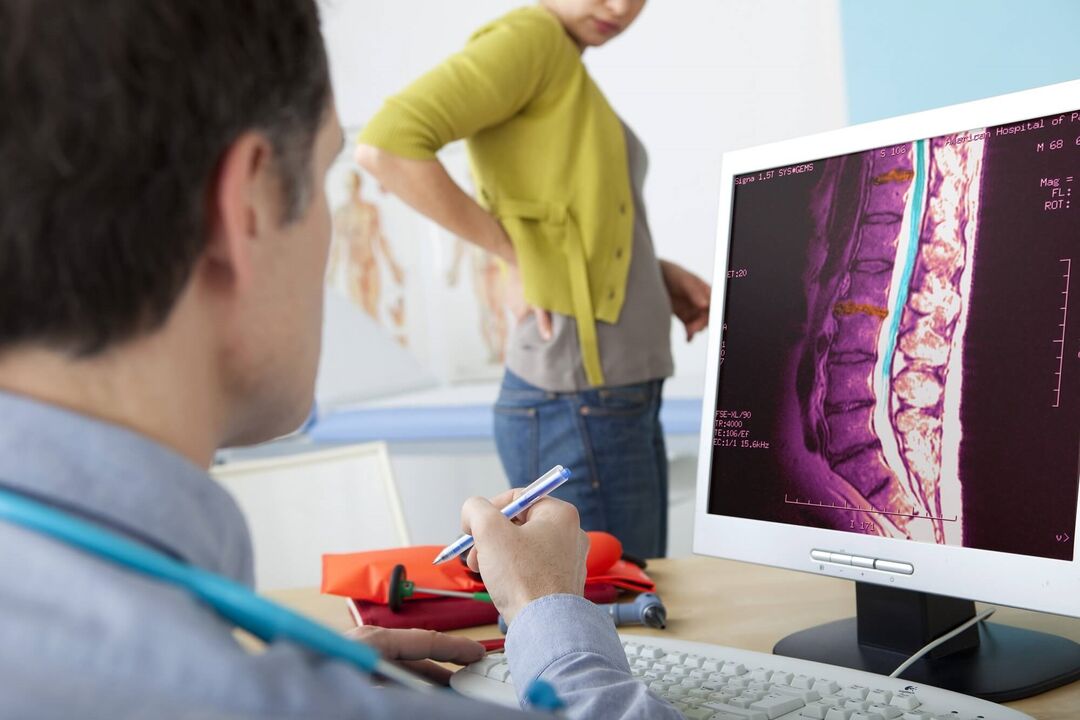
With lumbar pain, most patients first look for advice to the therapist, who, if appropriate symptoms, sends them to further examination to a neurologist.He, in turn, conducts an inspection, collects an anamnesis and prescribes hardware studies to make a precise diagnosis and determine the degree of neglect of the disease.
During anamnesis collection, the expert's main task is to discover the nature of unpleasant sensations, their location, intensity and duration and also understand what frequency is the exacerbations of the disease happen, which, as a rule, precede and what the measurements bring relief to the patient.Also, to make a diagnosis, the patient's lifestyle, their usual diet, the characteristics of professional activity, injuries and illnesses, including hereditary, are important.
Inspection allows to evaluate the patient's motor capabilities (posture, march, movements), the presence of tone and muscle cramps, as well as determining the level of sensitivity in the affected area.
However, you can get a complete image only with the help of hardware search: radiography, CT and magnetic resonance imaging.X -ray allows you to see violations of spine structures, evaluate the condition of intervertebral discs and in time to recognize the tendency to reduce lumen among vertebrae.Computed tomography in this case is more informative - it makes it possible to look literally inside the spine and study the existing pathologies.And magnetic resonance imaging, in turn, provides exhaustive information about the state of the spinal cord, nerve endings, muscles and blood vessels, which is extremely important not only to diagnose “lumbar osteochondrosis” but also to determine the degree of neglect of the disease.
Treatment Methods
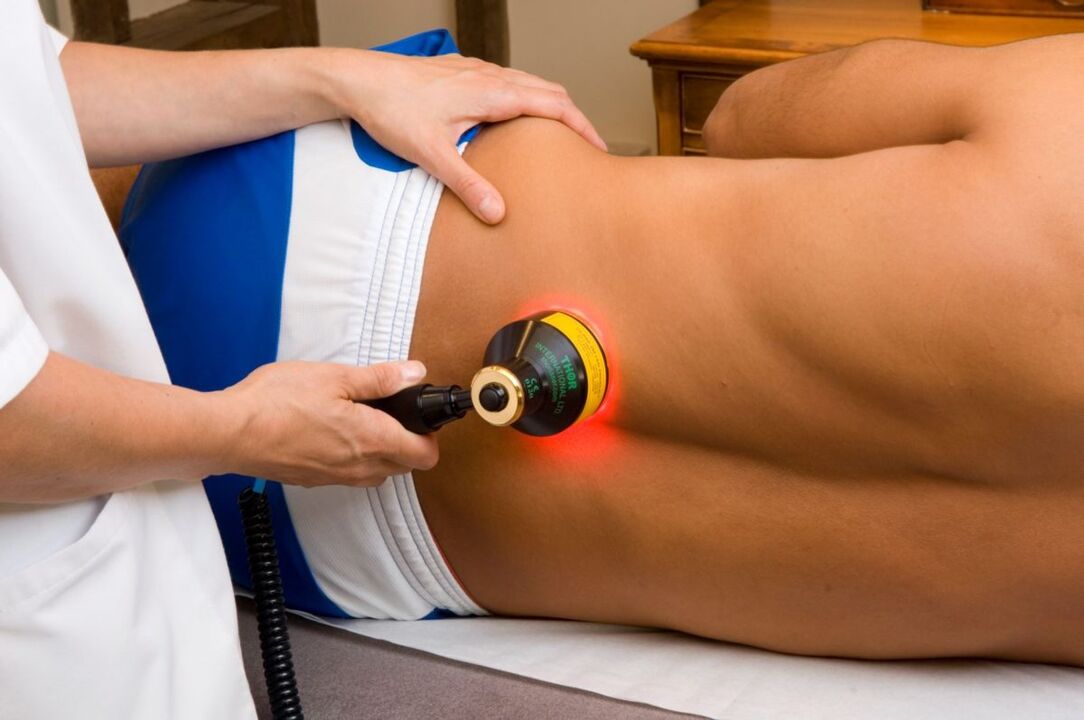
To successfully deal with lumbar osteochondrosis, patients need complex therapy, necessarily including drug treatment, physiotherapeutic procedures, special gymnastics, massage, as well as the use of traditional medicine recipes that increase the effect of the use of traditional methods.
The priority task that needs to be resolved by starting the treatment of lumbar osteochondrosis is the relief of pain syndrome, because during the exacerbation of the disease many therapeutic methods such as physical therapy and exercise therapy cannot be used.For this purpose, patients receive prescribed painkillers and injections, as well as non -esteroid anti -inflammatory drugs.It is the last one that is the main component of the drug treatment of osteochondrosis - they deal not only with their symptoms, but also affect the causes that cause their appearance.In the most difficult cases, glucocorticosteroids are used to combat the inflammatory process, which are usually introduced directly into deep tissues in the damage zone, along with novocaine or lidocaine.
In addition, osteochondrosis patients need preparations to remove muscle spasms - anticonvulsants and muscle relaxants, chondoprotectors that restore damaged cartilaginous tissue and group B vitamins that strengthen the protective functions of the body and reduce inflammation.
After painting the pain, physiotherapeutic procedures come to the forefront in the treatment of osteochondrosis.We are talking about the use of laser therapy, magnetotherapy, ultrasound, electrophoresis, acupuncture, mud baths, paraffin applications, etc., which effectively deal with discomfort and pain and correct the result of medicines.
An important place in the fight against lumbar region's osteochondrosis is diverted with physical therapy exercises - subject to regular execution, the sets of exercises specially designed for this case significantly improve the patient's condition, returning to freedom of movement almost in full.And professional massage will help consolidate successes that perfectly reach muscle cramps.Non -traditional medicine, which offers osteochondrosis, is playing a non -it role in this matter, not only effective in combating this disease, but also safer than many synthetic medicines.
Why is lumbar osteochondrosis dangerous?
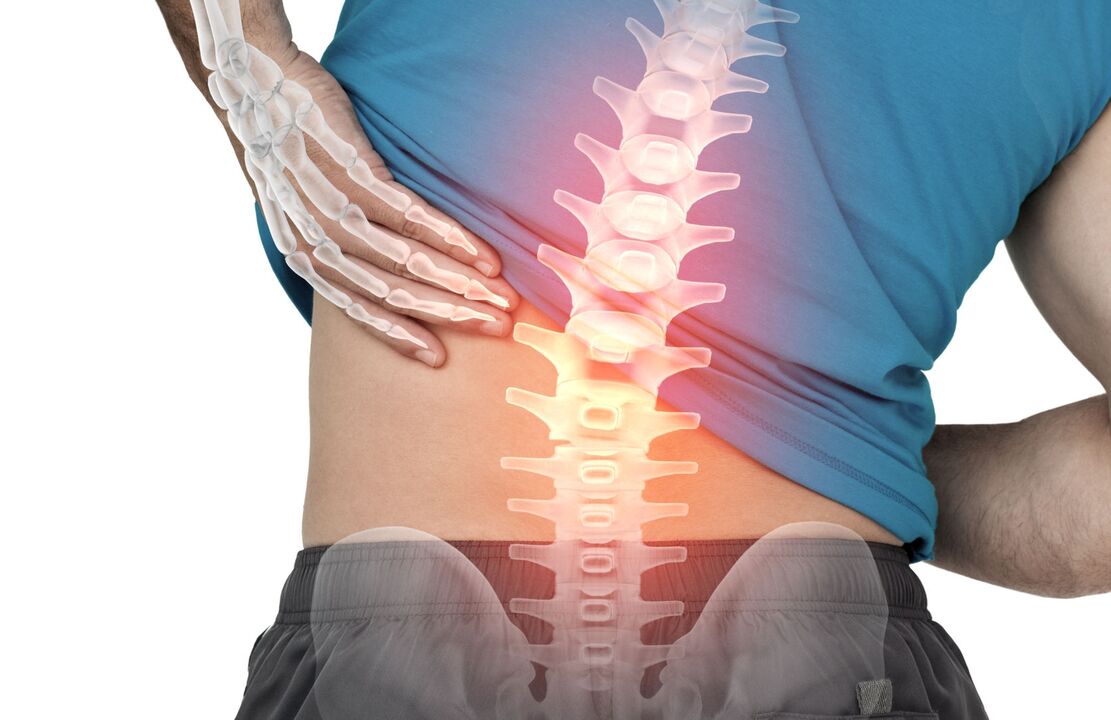
In addition to intensive pain, which often makes the life of a truly unbearable lumbar osteochondrosis patient, people with this diagnosis are limited by motor skills and, in the last stages of the disease, some of them can be completely lost.We are talking about paralysis of the lower extremities, which can develop as a result of spinal cord compression.In the most extreme case, osteochondrosis is able to lead to death if there are significant damage to the spinal cord shell.
But without reaching 4 stages, lumbar osteochondrosis seriously harms human health.It often ends with the formation of intervertebral hernias, requiring prolonged and complex treatment and, in some cases, and surgical intervention.In addition, squeezing blood vessels, which is characteristic of osteochondrosis, can lead to dangerous stagnation formation and violate the work of other internal organs.In patients with this diagnosis, the genitourinary system usually suffers - lumbar osteochondrosis is able to cause problems with ovaries, uterus and appendages in women and erectile dysfunction in men.
It is obvious that, in time to recognize the symptoms of osteochondrosis, seek help and start your complex treatment - the task is extremely important.But the role of prevention is no less important in this matter - it is with your help that you can reduce the risk of developing the disease and maintaining good health.We are talking about regular but moderate physical effort, a healthy lifestyle, a balanced diet, compliance with the drink regime and expert exams that can identify possible problems in the early stages.
It should be remembered that lumbar osteochondrosis is a serious disease, which is extremely dangerous for health to ignore the symptoms of which.Just recognizing the disease in time and starting treatment, you can decrease pathological processes and return the patient to lead the opportunity to lead the usual lifestyle.Otherwise, the consequences may be the most deplorable, until the deficiency, from which the patient can no longer get rid of.

























